Creating Variables in Narrative Reporting:

Creating Variables in Narrative Reporting:
What are Variables?
Report package variables consolidate and maintain common text, numbers, and dates that are displayed throughout a report package. They can also be used to reference content between doclets. There are two types of variables which are static and reference variables. When a report package is carried over to the next year, the variables created will automatically update to show the current dates and information. This will ensure accuracy and consistency.
Let’s go through the differences between the two variable types, Static and Reference.
Static Variables:
- A static variable is information defined by the user, such as dates or a set value, that is going to be used throughout the report package.
- They can be easily updated, and all the doclets containing the variable value will be affected by the change.
- Static variables are to help maintain common dates, numbers, and text across the report package.
Reference Variables:
- Reference variables are created by referencing another doclet or file within the report package as the source. Ex: most reference doclets for variables will be an excel sheet.
- Reference variables can be sourced from text in Word or an Excel cell value, but they cannot be sourced from PowerPoint.
- Whenever the source document is updated or changed, those changes will automatically update the variable value wherever it is used in the report package.
- This can be used for words such as ‘increase’ or ‘decrease’, or it can be used for numbers for data.
Let’s now create both a Static and a Reference variable.
How to Create a Static Variable:
- Open Microsoft Word and connect to your Narrative Reporting application through SmartView. To do this, go to the SmartView ribbon, click ‘Panel’, then Private Connections, then log into your instance.
- Find your report package and drill down to then find and open the doclet (likely a Word document) that you want to apply the variables to in your report package.
- Once your report package is open in the panel, click in the drop down, switch from ‘Report Center’ to ‘Variables’.
![]()
4. Click the green + sign to create a variable. Click Static Variable.

5. The Name is what you want it to be called. For example, say it is currently the year 2021, you can name it ‘Current Year’ and make the Value ‘2021’. (Description is optional). To save it, click the green check mark under where you are creating it.
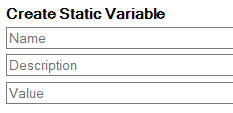
6. Now, in your Word document, anywhere that you have 2021, the current year, highlight over 2021, then click the arrow in the properties panel to apply the variable.

Your static variable is now complete!
Note: There are endless types of static variables. You can create other ones such as ‘Future Year’ – 2022, ‘Prior Year’ – 2021, Current Month, Prior Month, etc.
The purpose of these static variables is so now when 2022 becomes the ‘Current Year’ it is easy to switch that variable’s value, and it will replace all the values you had connected to it in your report package. This makes it easier rather than going through and changing them one by one.
How to Create a Reference Variable:
Tip: The easiest way to create a reference variable is to start by having a form in your Planning application already created, and contained with the data that you want to use.
- Open a blank excel sheet and connect it to your Planning application through SmartView (not your Narrative Reporting instance). Do this in the SmartView ribbon then select ‘Panel’ then ‘Shared Connections’.
- Drill down to find the form that you want to use to retrieve your data from.
- Click on the form. Click ‘Open form’ at the bottom. It will open in Excel.
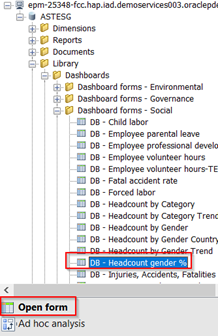
4. It will open like the screenshot below, based on what the form looks like.
Note: These two screenshots in the example are not the same form.
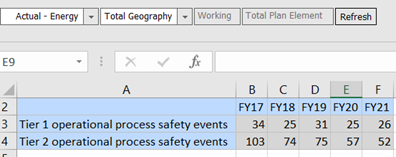
5. Save this excel sheet with a memorable name and close it. Go to your Narrative Reporting web instance and add this as a reference doclet in your report package. To do this, click the drop-down arrow of the section you are using the reference in, select ‘Manage Section’ then ‘Add Reference Doclet’.
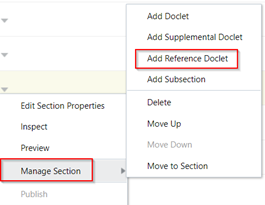
6. A screen will open where you can edit your reference doclet properties. Select the ‘Type’ as Excel, then browse for your excel sheet that you just created.
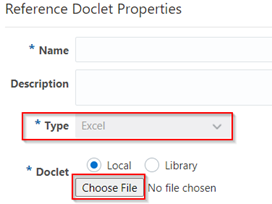
Tip: If you do not already have a subsection (or folder) within your section called “Reference Doclets” or “RD”, then create one.
Example of how to create a subsection is shown here:
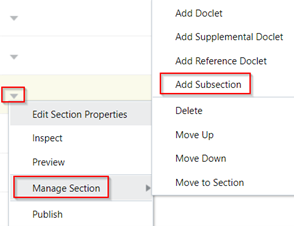
7. Now to reopen your excel sheet, go to your open Word document where you are putting the referenced variables. Make sure you are now connected to your Narrative Reporting instance through SmartView. In the Report Center, drill down to find the Excel sheet where you have saved it, then double click to open it.
8. Once you have it opened in Microsoft Excel, create sheet 2 at the bottom. Create your own chart, like shown below, but to replicate your own data, to grab which numbers you need.
9. Link your cells in sheet 2 to your data in sheet 1.
10. Example: B2 should have “=Sheet1!E3” (look above to see reference) and so on. The total in row 4 is the sum of rows 2 and 3. The totals in rows 7 and 8 are = to the totals in row 4.
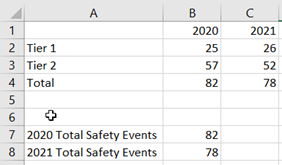
11. Open and check out the excel sheet (bottom right of your screen), then check it back in (top left in the Narrative Reporting ribbon).
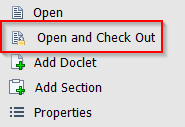
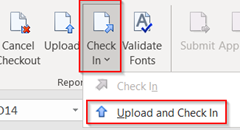
12. Go back to your Word document, switch the drop-down where it says ‘Report Center’ to ‘Variables’.
![]()
13. Start creating all the reference variables that you need by clicking the green +.

14. Create a name for it. Description is optional. Notice how the third line is grayed out, this is for your value. To add the value, find the number in your Word document, highlight over it, then click the blue arrow. It will bring the value over.
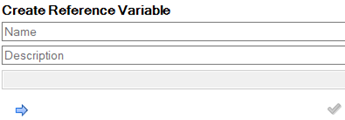
15. Once you have a name and value, the checkmark will turn green. Click the green check mark.
For example, here are some of the reference variables created for this specific data.
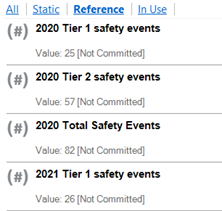
16. Make sure to check out and then check back in your Word document. This is very important.
Your reference variable is now complete!
The purpose of these reference variables is to have the data in your report package linked to your planning application. This way, if the data was to change in the planning application, your report package will also reflect the change.
Contact us with any questions or for more information.
About AST
AST is an award-winning, full-service enterprise solution provider, guiding digital transformation for clients in the Government and Commercial Sectors for more than two decades. Clients look to AST for leadership and assistance in transforming their organizations via software solutions, process engineering, and change management.

Leave a Reply